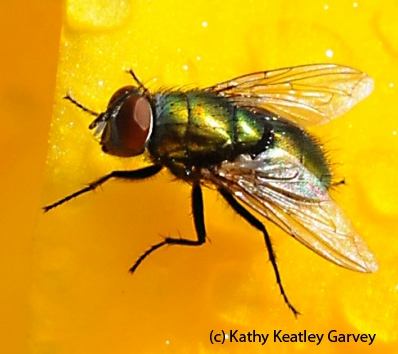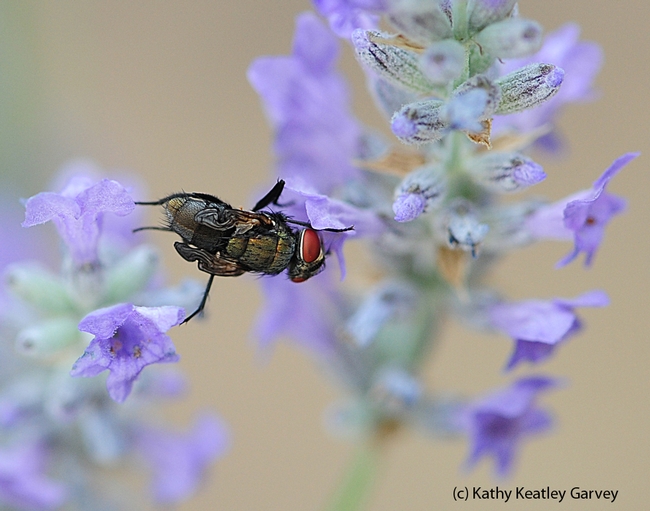
It's appropriate during National Pollinator Week to remember that.
We spotted this newly emerged green bottle fly (below) nectaring on lavender last week in our yard.
It seemed out of place among the honey bees, leafcutter bees and carpenter bees working the blossoms.
We didn't recognize it as a newly emerged green bottle fly, Lucilla sericata. But fly experts Martin Hauser of the California Department of Food and Agriculture and Terry Whitworth of Washington State University, did.
Family Calliphoridae. Genus Lucilla. Species sericata.
"This looks like a Calliphoridae which just emerged, so the wings are still folded," said senior insect biosystematist Hauser.
Said Whitworth, an adjunct professor of entomology at WSU who maintains the websites birdblowfly.com and blowflies.net: "This is a teneral fly, not fully sclerotized. You can see it just emerged and the wings have still not extended so identification can be tough. However, the shot clearly shows three postacrostichals which almost certainly makes it the common, cosmopolitan Lucilia sericata."
Forensic entomologist Robert Kimsey of UC Davis marveled at the newly emerged fly. "Something dead in your yard?" he quipped.
"No," we said. "But the cat caught a rat the other day. We disposed of it quite quickly." Not the cat, the rat.
'Course, flies aren't known for being pollinators. They're better known--and rightfully so--for disposing of carrion and as the key tool in forensic entomology. They're also used in medical science as maggot therapy. And for art: one of Kimsey's former graduate students, forensic entomologist Rebecca O'Flaharty, coined the term "Maggot Art" (trademarked) and that's one of the activities at the annual UC Davis Picnic Day. Graduate and undergraduate students in the Department of Entomology and Nematology show youths how to dip a maggot in water-based, non-toxic paint, place it on white paper, and let it crawl. Voila! Maggot Art! Suitable for framing...
Everything in life--and death--has a purpose.
Attached Images:
